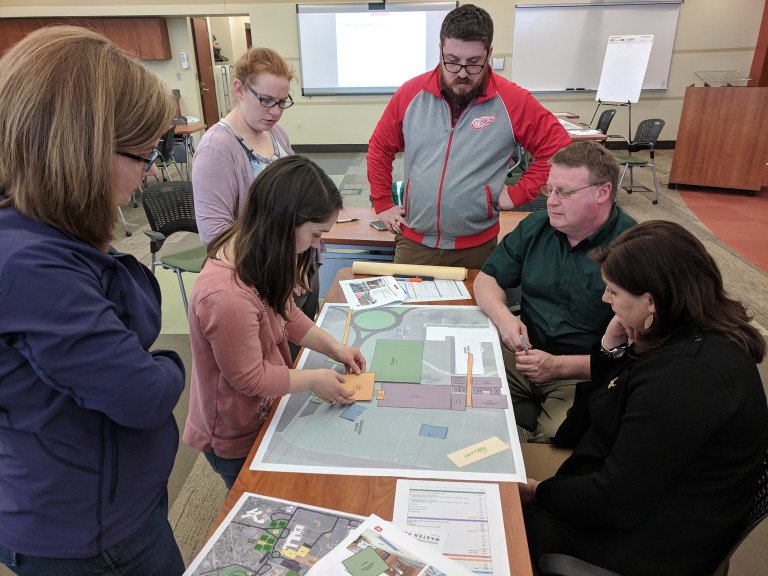Master Facility Plan
Article | 08.10.2020By Richard D'Alessandro, AIA, Senior Project Manager, Architecture
Connect with Rick
Why is it important to have a master facility plan? What goes into it and what does the district get out of it?
The goal of a master facility plan is to help define success for the district. It provides critical information about the condition of facilities and how well they accommodate curriculum and community needs. It defines the current condition of district facilities, the probable cost to meet current and future needs, prioritizes project scopes and identifies probable funding sources for implementation.
So, when is it time to think about having a master facility plan – NOW! Ideally a master facility plan is established and regularly updated to provide the district accurate information for decision making. It fits into the planning process when you realize there are problems with your buildings. Problems? Leaking roofs, crumbling parking lots, competition for students whether leaving or coming into the district, are curriculum needs being met and unknowns like COVID-19 – the things that keep you up at night. It seems exhausting and intimidating at times. How do we prepare for emergencies, or better yet, avoid them? We want to make these issues opportunities for success rather than problems. A master facility plan helps identify strengths and weaknesses and provides tools to help your planning be more predictable and less reactive.
Most districts will need the assistance of design professionals to collect and evaluate the data required for a master facility plan. An in-depth discussion of how to select design professionals is a discussion for another day but there are a couple things to keep in mind. Firm experience is certainly an indicator of success with regards to a particular building type, but staff experience is critical. You are procuring experience. Look for individuals who have facilitated the process before. People who know existing buildings and how facilities impact curriculum.
You have already taken the first step by acknowledging there are problems that need solutions in your district. And you need help to get the job done. So, how do we make it happen. The master facility plan process breaks into several phases.
Phase One: Establish a Vision
The district initiates the process by understanding there are unmet needs and wants to seek solutions. Then assess what is known about the problems and determine if additional tools are needed to find solutions. If so, define a planning committee to manage the process internally and obtain the services of design professionals with master facility plan experience. Establish a clear understanding of the goals and expectations you hope to achieve and how they will support your mission and core values. As a team define the vision of success for the process and formulate guiding principles based on the mission, core values and vision with which the team, and process, must align. Clearly defining goals and, expectations and establishing guiding principles is an important step toward developing meaningful and powerful results.
Phase Two: Facility Assessment and Data Collection
Be prepared to provide your design professionals documents needed to evaluate facilities in a way that focuses on your guiding principles. Drawings that show the history and current state of facilities along with any documents related to additions, renovations, or maintenance such as new boiler, roofs, windows, technology, etc. Depending on the scope of the assessment you should also be prepared to provide utility data and usage, hours of operation, technology implementation, curriculum, and demographic information. The outputs will only be as good as the inputs. If adequate documentation is not available, have your design professionals obtain it for you. Recognize this method will take time and financial resources to achieve.
Phase Two will require design professionals to take in-depth facility tours and engage with staff, faculty and perhaps community members. During this phase of the process team members should meet frequently to make sure efforts align with the guiding principles. If the process is not aligned, now is the time to re-focus efforts. It is of paramount importance that this phase gathers the appropriate information that will become the tools for future decision making. If we do not get phase two right, the rest of the planning process will be affected. The deliverable documents from phase two will be a draft Facility Assessment Report for District review and approval. The report should clearly define findings and results including any information provided by the District.
Phase Three: Define Future Projects – Scope, Schedule, and Budget
Once the draft Facility Assessment Report is complete, the district will decide how to utilize the results. The report will include definitions of work scope required to meet current and future district needs include estimated cost. The District will prioritize future projects identified based on the scope of work in the report and how they will be funded. The deliverable for phase three will be the draft master facility plan. It includes the facility assessment, prioritized projects, and recommended funding methods.
Phase Four: Validation and Recommendations
The draft report will be reviewed by the district and approved or revised by the planning committee and returned to the design professionals for revisions. Once the recommended revisions made the master facility plan will return to the district for validation by the planning committee to make sure it meets the criteria for success. Once the report is validated it is returned to the district to make recommendations on implementation of the plan.
The master facility plan provides vital information for the district to use if it decides to initiate a bond campaign for implement of some or all projects. It becomes a valuable resource that has been well researched and documented. It contains goals and a path for achieving them. It prioritizes needs vs. wants and provides the district and potential voters a path to success.

Services
